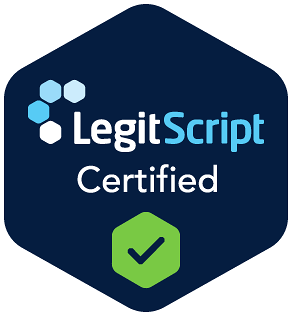What is the scope of drug addiction in the United States?
What is the scope of drug addiction in the United States currently? Drug addiction has been a longstanding issue in the United States, but the COVID-19 pandemic and the destructive methods there were used t3o combat the problem has magnified this crisis. This lead to unprecedented increases in overdose deaths, substance abuse and misuse, and barriers to treatment. To fully grasp the current state of addiction, it’s essential to understand the scope of drug and alcohol use both before and after the pandemic.
Before the 2020 Pandemic: The 2018 National Survey on Drug Use and Health
In 2018, the National Survey on Drug Use and Health (NSDUH) revealed alarming statistics about substance use in the U.S.:
- 164.8 million Americans aged 12 and older were past-month substance users.
- This included 139.8 million alcohol users, 58.8 million tobacco users, and 31.9 million illicit drug users.
- Prescription drug addiction was on the rise, and alcohol abuse was the third leading preventable cause of death in the U.S.
- Around 139.8 million Americans consumed alcohol in the past month, and over 67 million were binge drinkers.
- 1 in 11 adolescents aged 12 to 17 were past-month alcohol users, despite adolescent alcohol use decreasing over the years.
The data also highlighted the growing problem of marijuana use, with 43 million marijuana users in 2018 and an increase in use among young adults. Meanwhile, prescription pain medication misuse was a close second in terms of illicit drug use, with over 3.6% of the population misusing pain relievers. The survey emphasized the ongoing challenge of prescription drug misuse, especially as most people who abused pain medication received it from friends or family.
After the Pandemic: A Worsening Crisis
Overdose Deaths and Opioid Use Surge
As the pandemic unfolded, drug-related deaths skyrocketed, with over 100,000 overdose deaths recorded in 2021. This surge was primarily driven by fentanyl, a synthetic opioid that is 50 to 100 times more potent than morphine. Fentanyl often finds its way into other drugs like cocaine or methamphetamine, making every dose potentially lethal.
Mental Health and Substance Use During the Pandemic
The pandemic also caused a significant rise in mental health issues such as depression and anxiety, leading many to turn to drugs or alcohol for relief. Lockdowns, social isolation, and financial stress created an environment where self-medication became common, increasing the rates of substance misuse.
Barriers to Treatment
Access to addiction treatment became even more difficult during the pandemic. Lockdowns caused many rehab centers to close or limit capacity, leaving those struggling with addiction without the support they needed. Although telehealth services expanded, they were often insufficient for individuals requiring intensive, in-person care.
A Growing Threat: Fentanyl and Polydrug Use
Fentanyl is a key factor in the rise of overdose deaths. It has proliferated in the illegal drug market, frequently mixed into drugs without the user’s knowledge. The danger of fentanyl is compounded by polydrug use, where individuals combine multiple substances, such as fentanyl and cocaine, further increasing the risk of fatal overdoses.
Alcohol Consumption: A Hidden Pandemic
Alcohol use also surged during the pandemic. Many turned to alcohol as a way to cope with isolation and stress, resulting in higher consumption levels. Alcohol-related health issues and addiction became more prevalent, with a significant increase in binge drinking and heavy drinking.
Before and After Scenario: The Current Scope of Drug Addiction Crisis
Before the Pandemic
In 2018, the National Survey on Drug Use and Health painted a grim picture of the drug and alcohol addiction landscape:
- 164.8 million Americans were using substances, with alcohol, tobacco, and marijuana being the most commonly used.
- Prescription drug misuse was also a growing problem, with many people abusing pain relievers obtained from friends or family.
- Alcohol abuse remained one of the leading preventable causes of death in the country.
Despite these challenges, there were ongoing efforts to reduce addiction rates, particularly among adolescents, with some progress made in reducing alcohol consumption and prescription drug misuse among younger populations.
After the Pandemic
The COVID-19 pandemic magnified these existing problems:
- Overdose deaths reached record levels, largely driven by fentanyl and other synthetic opioids.
- The mental health crisis led more people to misuse drugs and alcohol as coping mechanisms.
- Access to treatment became increasingly limited due to pandemic-related restrictions, leaving many without the help they needed.
While some trends from 2018 persisted—such as the rise in marijuana use among young adults—others worsened dramatically, particularly the rate of opioid overdoses and alcohol-related health issues. The pandemic has shown that without timely intervention and accessible treatment options, addiction continues to escalate.
The Role of Intervention and Treatment
The pandemic’s impact on addiction highlights the critical need for early drug intervention and treatment services. Drug and alcohol addiction can worsen without proper support, and family intervention can be a powerful tool to help loved ones get the help they need.
A professional interventionist can guide families through the process of confronting their loved one, providing both education and emotional support. These interventions are vital, as they can help initiate the recovery process, prevent further substance use, and allow the family to heal.
Call to Action: Seek Help Before It’s Too Late
If you or a loved one is struggling with addiction, don’t wait for the problem to escalate. Newman Intervention and Addiction Services offers comprehensive intervention support, rehabilitation planning, and post-treatment care. Contact us today to learn how we can help you take the first step toward recovery and rebuild your life.
Sources-
https://www.ncbi.nlm.nih.gov/pmc/articles/PMC8559994/
https://www.cdc.gov/nchs/pressroom/nchs_press_releases/2022/202205.htm
Saving a Life Starts Here
Learn more about our method for successful intervention. Contact us today for a free, confidential consultation with an Intervention Counselor.
Please fill out the form and download your copy of the 25 tips for Successful Intervention




